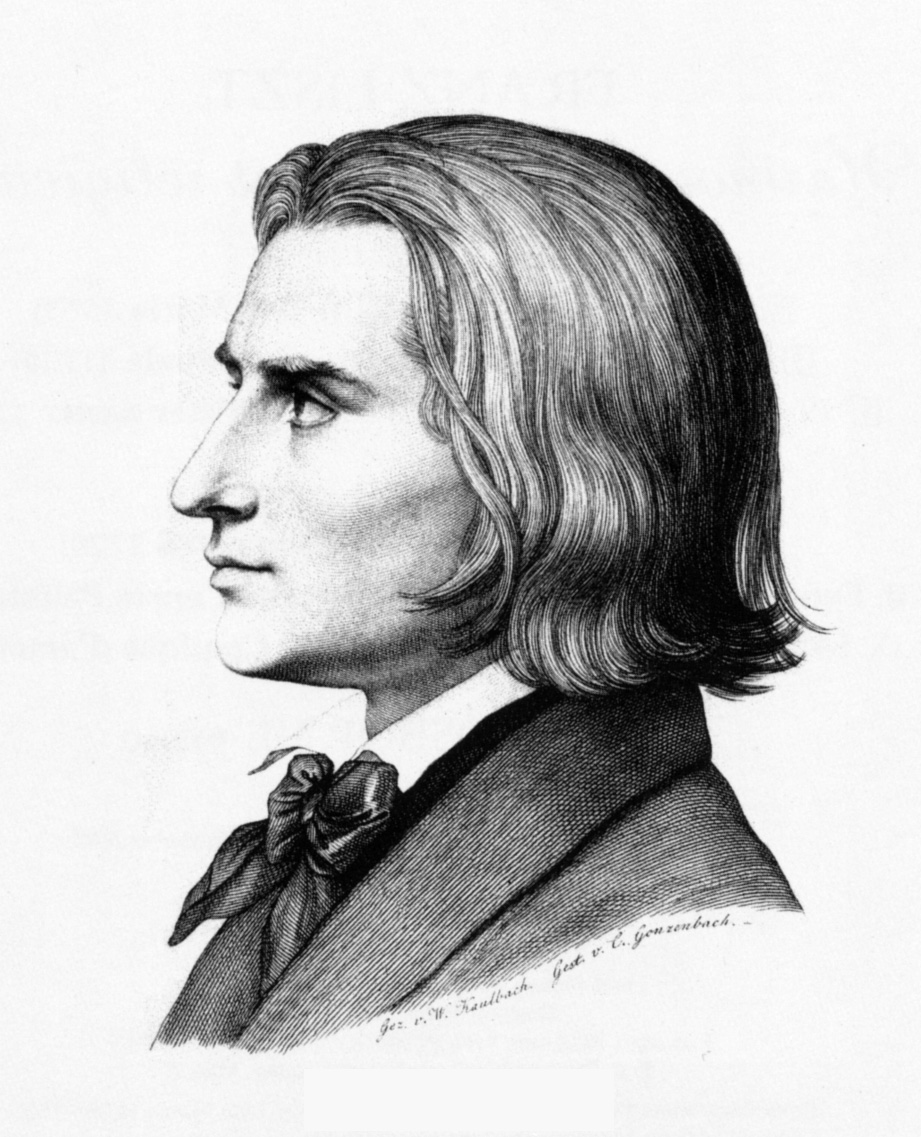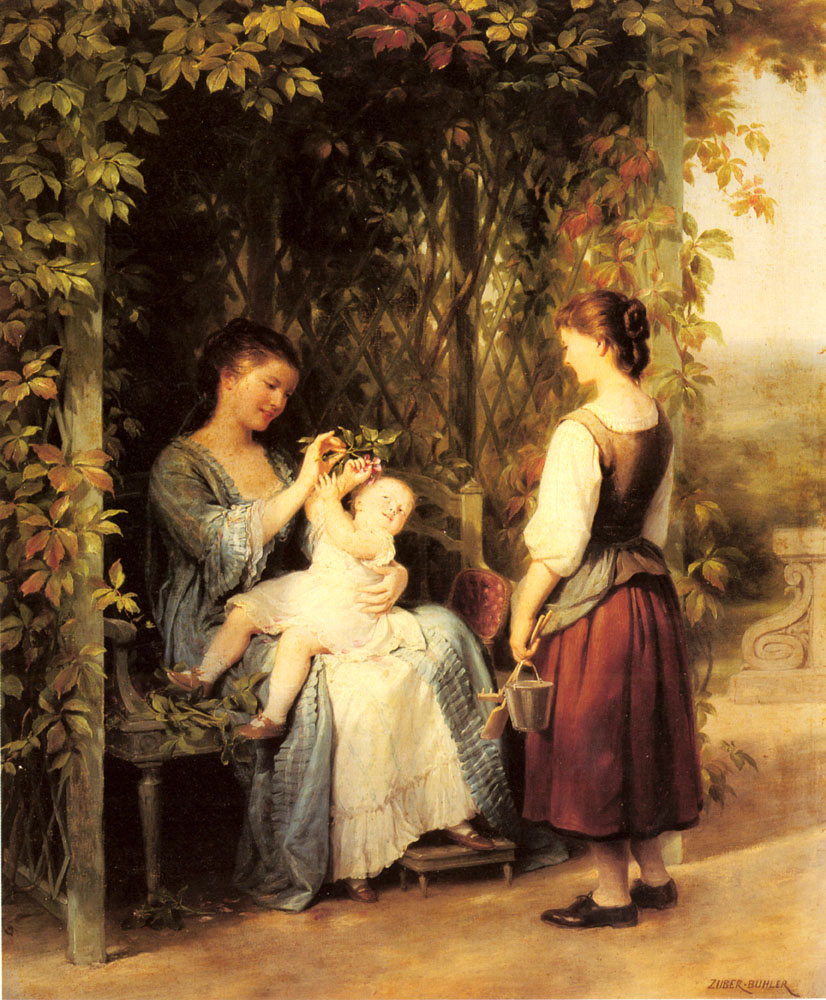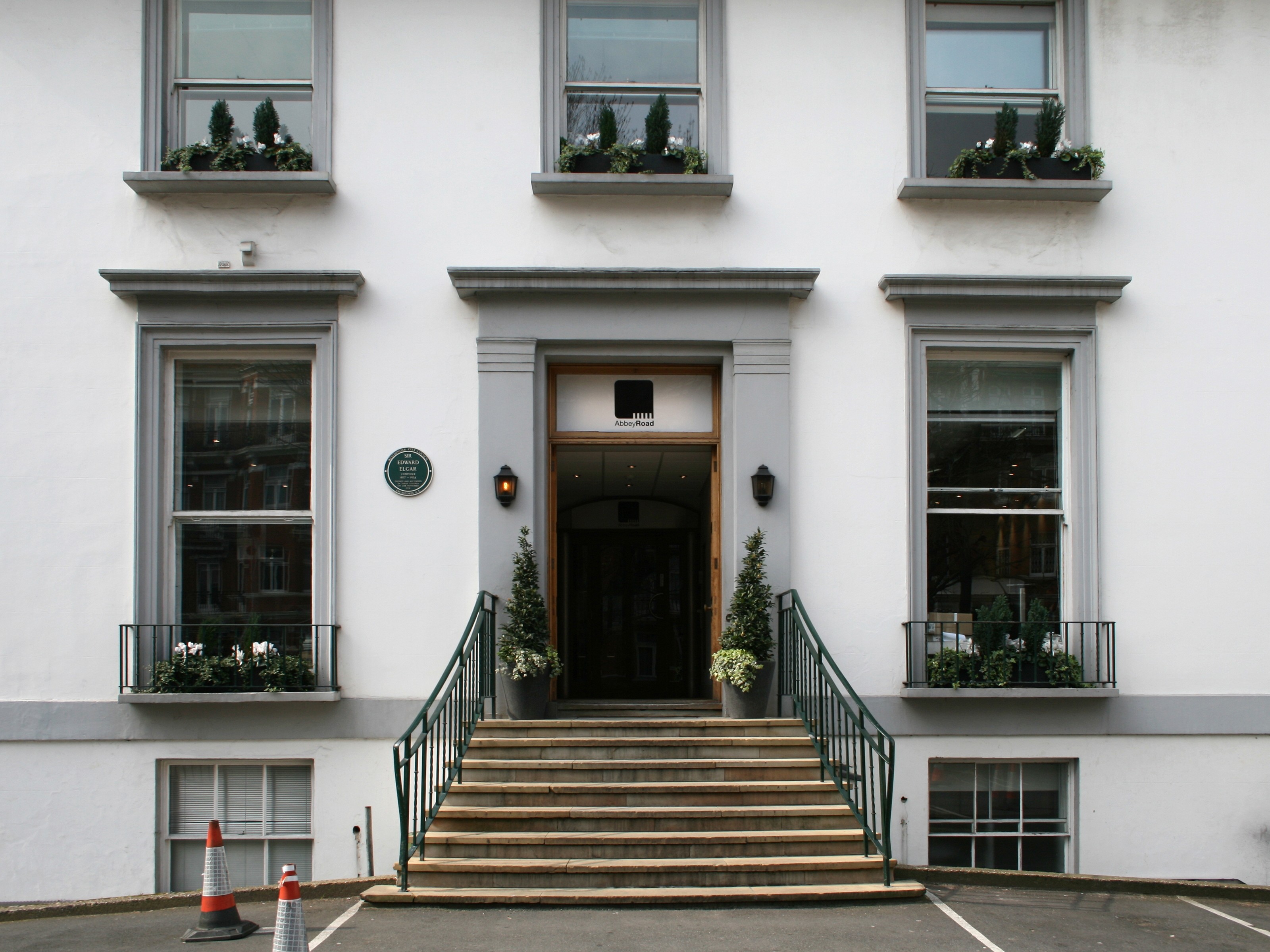|
Lisztomania (phenomenon)
Lisztomania or Liszt fever was the intense fan frenzy directed toward Hungarian composer Franz Liszt during his performances. This frenzy first occurred in Berlin in 1841 and the term was later coined by Heinrich Heine in a feuilleton he wrote on April 25, 1844, discussing the 1844 Parisian concert season. Lisztomania was characterized by intense levels of hysteria demonstrated by fans, akin to the treatment of celebrity musicians today – but in a time not known for such musical excitement. Background Franz Liszt began receiving piano lessons at the age of seven from his father Adam Liszt, a talented musician who played the piano, violin, cello, and guitar, and who knew Joseph Haydn, Johann Nepomuk Hummel, and Ludwig van Beethoven personally. By age eleven, Franz Liszt was already composing music and appearing in concerts. As he grew older, Liszt continued to study and develop his expertise at playing piano. Liszt began an extensive tour of Europe in 1839, which he continued f ... [...More Info...] [...Related Items...] OR: [Wikipedia] [Google] [Baidu] |
Liszt In 1843
Franz Liszt, in modern usage ''Liszt Ferenc'' . Liszt's Hungarian passport spelled his given name as "Ferencz". An orthographic reform of the Hungarian language in 1922 (which was 36 years after Liszt's death) changed the letter "cz" to simply "c" in all words except surnames; this has led to Liszt's given name being rendered in modern Hungarian usage as "Ferenc". From 1859 to 1867 he was officially Franz Ritter von Liszt; he was created a ''Ritter'' (knight) by Emperor Francis Joseph I in 1859, but never used this title of nobility in public. The title was necessary to marry the Princess Carolyne zu Sayn-Wittgenstein without her losing her privileges, but after the marriage fell through, Liszt transferred the title to his uncle Eduard in 1867. Eduard's son was Franz von Liszt., group=n (22 October 1811 – 31 July 1886) was a Hungarian composer, pianist and teacher of the Romantic period. With a diverse body of work spanning more than six decades, he is considered to be one of ... [...More Info...] [...Related Items...] OR: [Wikipedia] [Google] [Baidu] |
Cameo (carving)
Cameo () is a method of carving an object such as an engraved gem, item of jewellery or vessel. It nearly always features a raised (positive) relief image; contrast with intaglio, which has a negative image. Originally, and still in discussing historical work, cameo only referred to works where the relief image was of a contrasting colour to the background; this was achieved by carefully carving a piece of material with a flat plane where two contrasting colours met, removing all the first colour except for the image to leave a contrasting background. A variation of a carved cameo is a cameo incrustation (or sulphide). An artist, usually an engraver, carves a small portrait, then makes a cast from the carving, from which a ceramic type cameo is produced. This is then encased in a glass object, often a paperweight. These are very difficult to make but were popular from the late 18th century through the end of the 19th century. Originating in Bohemia, the finest examples were mad ... [...More Info...] [...Related Items...] OR: [Wikipedia] [Google] [Baidu] |
Bona Dea
Bona Dea (; 'Good Goddess') was a List of Roman deities, goddess in Religion in ancient Rome, ancient Roman religion. She was associated with chastity and fertility in Women in ancient Rome, Roman women, healing, and the protection of the SPQR, state and people of Rome. According to Roman literary sources, she was brought from Magna Graecia at some time during the early or middle Roman Republic, Republic, and was given her own Religion in ancient Rome#History of Roman religion, state cult on the Aventine Hill. Her rites allowed women the use of strong wine and blood-sacrifice, things otherwise forbidden them by Mos maiorum, Roman tradition. Men were barred from her Greco-Roman mysteries, mysteries and the possession of her true name. Given that male authors had limited knowledge of her rites and attributes, ancient speculations about her identity abound, among them that she was an aspect of Terra (mythology), Terra, Ops, Cybele, or Ceres (mythology), Ceres, or a Latins (Italic trib ... [...More Info...] [...Related Items...] OR: [Wikipedia] [Google] [Baidu] |
Cantharides
Cantharidin is an odorless, colorless fatty substance of the terpenoid class, which is secreted by many species of blister beetles. It is a burn agent or a poison in large doses, but preparations containing it were historically used as aphrodisiacs (Spanish fly). In its natural form, cantharidin is secreted by the male blister beetle and given to the female as a copulatory gift during mating. Afterwards, the female beetle covers her eggs with it as a defense against predators. Poisoning from cantharidin is a significant veterinary concern, especially in horses, but it can also be poisonous to humans if taken internally (where the source is usually experimental self-exposure). Externally, cantharidin is a potent vesicant (blistering agent), exposure to which can cause severe chemical burns. Properly dosed and applied, the same properties have also been used therapeutically, for instance for treatment of skin conditions such as molluscum contagiosum infection of the skin. Cantharidi ... [...More Info...] [...Related Items...] OR: [Wikipedia] [Google] [Baidu] |
Tickling
Tickling is the act of touching a part of a body in a way that causes involuntary twitching movements or laughter. The word evolved from the Middle English ''tikelen'', perhaps frequentative of ''ticken'', to touch lightly. In 1897, psychologists G. Stanley Hall and Arthur Allin described a "tickle" as two different types of phenomena. One type is caused by very light movement across the skin. This type of tickle, called a knismesis, generally does not produce laughter and is sometimes accompanied by an itching sensation. Physiology Tickling results from a mild stimulation moving across the skin, and is associated with behaviors such as smiling, laughter, twitching, withdrawal and goose bumps. The tickle can be divided into two separate categories of sensation, knismesis and gargalesis. Knismesis, also known as a "moving itch", is a mildly annoying sensation caused by a light movement on the skin, such as from a crawling insect. This may explain why it has evolved in many a ... [...More Info...] [...Related Items...] OR: [Wikipedia] [Google] [Baidu] |
Electricity
Electricity is the set of physical phenomena associated with the presence and motion of matter that has a property of electric charge. Electricity is related to magnetism, both being part of the phenomenon of electromagnetism, as described by Maxwell's equations. Various common phenomena are related to electricity, including lightning, static electricity, electric heating, electric discharges and many others. The presence of an electric charge, which can be either positive or negative, produces an electric field. The movement of electric charges is an electric current and produces a magnetic field. When a charge is placed in a location with a non-zero electric field, a force will act on it. The magnitude of this force is given by Coulomb's law. If the charge moves, the electric field would be doing work on the electric charge. Thus we can speak of electric potential at a certain point in space, which is equal to the work done by an external agent in carrying a unit of p ... [...More Info...] [...Related Items...] OR: [Wikipedia] [Google] [Baidu] |
Galvanism
Galvanism is a term invented by the late 18th-century physicist and chemist Alessandro Volta to refer to the generation of electric current by chemical action. The term also came to refer to the discoveries of its namesake, Luigi Galvani, specifically the generation of electric current within biological organisms and the contraction/convulsion of biological muscle tissue upon contact with electric current. While Volta theorized and later demonstrated the phenomenon of his "Galvanism" to be replicable with otherwise inert materials, Galvani thought his discovery to be a confirmation of the existence of "animal electricity," a vital force which gave life to organic matter. History According to popular legend, Luigi Galvani discovered the effects of electricity on muscle tissue when investigating an unrelated phenomenon which required skinned frogs in the 1780s and 1790s. His assistant is claimed to have accidentally touched a scalpel to the sciatic nerve of the frog and this result ... [...More Info...] [...Related Items...] OR: [Wikipedia] [Google] [Baidu] |
Magnetism
Magnetism is the class of physical attributes that are mediated by a magnetic field, which refers to the capacity to induce attractive and repulsive phenomena in other entities. Electric currents and the magnetic moments of elementary particles give rise to a magnetic field, which acts on other currents and magnetic moments. Magnetism is one aspect of the combined phenomena of electromagnetism. The most familiar effects occur in ferromagnetic materials, which are strongly attracted by magnetic fields and can be magnetized to become permanent magnets, producing magnetic fields themselves. Demagnetizing a magnet is also possible. Only a few substances are ferromagnetic; the most common ones are iron, cobalt, and nickel and their alloys. The rare-earth metals neodymium and samarium are less common examples. The prefix ' refers to iron because permanent magnetism was first observed in lodestone, a form of natural iron ore called magnetite, Fe3O4. All substances exhibit some type of ... [...More Info...] [...Related Items...] OR: [Wikipedia] [Google] [Baidu] |
Immunization
Immunization, or immunisation, is the process by which an individual's immune system becomes fortified against an infectious agent (known as the immunogen). When this system is exposed to molecules that are foreign to the body, called ''non-self'', it will orchestrate an immune response, and it will also develop the ability to quickly respond to a subsequent encounter because of immunological memory. This is a function of the adaptive immune system. Therefore, by exposing a human, or an animal, to an immunogen in a controlled way, its body can learn to protect itself: this is called active immunization. The most important elements of the immune system that are improved by immunization are the T cells, B cells, and the antibodies B cells produce. Memory B cells and memory T cells are responsible for a swift response to a second encounter with a foreign molecule. Passive immunization is direct introduction of these elements into the body, instead of production of these elements b ... [...More Info...] [...Related Items...] OR: [Wikipedia] [Google] [Baidu] |
Contagious Disease
A contagious disease is an infectious disease that is readily spread (that is, communicated) by transmission of a pathogen through contact (direct or indirect) with an infected person. A disease is often known to be contagious before medical science discovers its causative agent. Koch's postulates, which were published at the end of the 19th century, were the standard for the next 100 years or more, especially with diseases caused by bacteria. Microbial pathogenesis attempts to account for diseases caused by a virus. The disease itself can also be called a contagion. Historical meaning Originally, the term referred to a ''contagion'' (a derivative of 'contact') or disease transmissible only by direct physical contact. In the modern-day, the term has sometimes been broadened to encompass ''any'' communicable or infectious disease. Often the word can only be understood in context, where it is used to emphasize very infectious, easily transmitted, or especially severe communic ... [...More Info...] [...Related Items...] OR: [Wikipedia] [Google] [Baidu] |
The Beatles
The Beatles were an English Rock music, rock band, formed in Liverpool in 1960, that comprised John Lennon, Paul McCartney, George Harrison and Ringo Starr. They are regarded as the Cultural impact of the Beatles, most influential band of all time and were integral to the development of counterculture of the 1960s, 1960s counterculture and popular music's recognition as an art form. Rooted in skiffle, beat music, beat and 1950s rock and roll, rock 'n' roll, their sound incorporated elements of classical music and traditional pop in innovative ways; the band also explored music styles ranging from folk music, folk and Music of India, Indian music to Psychedelic music, psychedelia and hard rock. As Recording practices of the Beatles, pioneers in recording, songwriting and artistic presentation, the Beatles revolutionised many aspects of the music industry and were often publicised as leaders of the era's Baby boomers, youth and sociocultural movements. Led by primary songwriter ... [...More Info...] [...Related Items...] OR: [Wikipedia] [Google] [Baidu] |
Beatlemania
Beatlemania was the fanaticism surrounding the English rock band the Beatles in the 1960s. The group's popularity grew in the United Kingdom throughout 1963, propelled by the singles "Please Please Me", "From Me to You" and "She Loves You". By October, the press adopted the term "Beatlemania" to describe the scenes of adulation that attended the band's concert performances. From the start of 1964, their world tours were characterised by the same levels of hysteria and high-pitched screaming by female fans, both at concerts and during the group's travels. Commentators likened the intensity of this adulation to a religious fervour and to a female masturbation fantasy. Among the displays of deity-like worship, fans would approach the band in the belief that they possessed supernatural healing powers. In February 1964, the Beatles arrived in the United States and their televised performances on ''The Ed Sullivan Show'' were viewed by approximately 73 million people. There, the ban ... [...More Info...] [...Related Items...] OR: [Wikipedia] [Google] [Baidu] |











